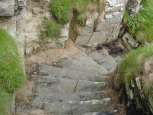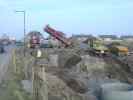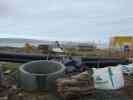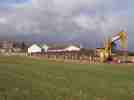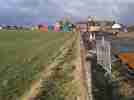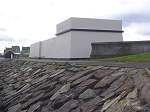 | Caithness.Org | Community | Business | Entertainment | Caithness... | Tourist Info | Site Map |
• Advertising • Chat Room • Contact Us • Kids Links • Links • Messageboard • News - Local & Scottish • News - UK & News Links • About / Contact Us • Submissions |
• Bookshop • Business Index & News • Jobs • Property For Sale • Property For Rent • Shop • Sutherland Business Index |
• Fishing • Fun Stuff • George, The Saga • Horses • Local Galas • Music • Pub Guide • Sport Index • What's On In Caithness |
• General Information • B & Bs • Backpackers • Caravan & Camping • Ferries • Getting Here • Holiday Letting • Hotels • Orkney • Pentland Firth • Sutherland • Taxis |
| N E W S F E E D S >>> |
|
Caithness.org News Bulletins |
||
| Caithness.org News Index | Front Page Archives | |
|
Water News - Caithness - Highland - Scotland
6 June 07 Following the introduction of European legislation, the Scottish Environment Protection Agency (SEPA) is preparing a plan that will reflect the aspirations of all of those using, managing and protecting Scotland's water environment. This plan, which will be produced in 2009, will include measures to benefit rivers, lochs and coastal waters in the North Highland area covering catchments draining to the coast between Cape Wrath and Lossiemouth.
Tom Inglis of SEPA, said, "Effectively
involving others is central to the The meetings will be held at 3-5pm and 7-9pm on 18 June in the Pentland Hotel, Thurso and 3-5pm and 7-9 pm in the Inverness Caledonian Thistle Football Stadium (Kingsmills Suite) on 20 June. Each meeting will consist of a series of short presentations and an informal discussion. Refreshments will be available and those interested in attending should email Rachel.harding-hill@sepa.org.uk or call on 01349 860347. Notes
13 November 06 Work is getting underway this week (w/b 13 Nov) in Halkirk. 180 metres of pipe in the Sinclair Lane area is to be replaced. Work is also due to get underway in the coming weeks in the Elzy Road area of Staxigoe and the Green Road area of Wick where several hundred metres of pipe is earmarked for replacement. Andy Barnett, project manager for Scottish Water Solutions, said: "Together these projects are worth about £60,000 - a substantial investment which will benefit customers in these areas. The existing mains are thought to be up to 60 years old and are made from a mixture of cast iron, cement and plastic. The new pipes are made from more durable material and will serve these communities well for many years to come."
Minimum disruption
Investing in Highland
22 August 06
Today (22 August 2006) SEPA is issuing annual
subsistence charges for abstraction for the first time and, SEPA is taking
this opportunity to provide The charges will allow SEPA, over the next ten years, to deliver major improvements in the water environment, providing amenity, recreational and economic benefits which are dependent on a good water environment. The cost of delivering these important improvements will be recovered by the new charging scheme which reflects the cost recovery principle that funds SEPA's work. The charges were calculated on the basis of the Water Environment Charging scheme which was approved by the Scottish Ministers in March 2006. The charge is relative to the amount of risk that different types of activity pose to the environment and, as a result, the amount of work SEPA will put in to regulating activities and monitoring the environment. To understand the charge it is important to understand the scale of abstraction, for example, a mobile irrigation unit uses the same water as 6, 000 people in one day. Following the introduction of the new regulations, there have been a number of questions; for example:
Martin Marsden, Water Policy Unit Manager for SEPA said, " The environment is important to us all, not only for our quality of life but also for the economic development of Scotland. We have worked with water users over the past two years, to develop a charging scheme which focuses on activities which pose a risk to the environment. I firmly believe that the outcome is a fair charge for the work."
SEPA has a duty to secure the proper use of
water resources in Scotland, not only is this integral to the
environmental well being of Scotland, but it is also the lifeblood of
Scotland's agricultural industry and tourism.
18 July 06
· Rivers: target 351km, actual achieved =
393km
The target set for reducing the length of
poor water quality in Scotland's For estuaries, the target set was to reduce the unsatisfactory areas by 6.5km2, and to date 10.6km2 has been achieved. Coastal waters improvements in 2005 have also given a total reduction of 209km, which substantially exceeds the target to improve 145km by next year. A key driver of these enhancements has been the implementation of SEPA's Environmental Improvement Action Plans. As well as the improvements to sewerage infrastructure and effluent treatment schemes and other best practice initiatives, combined with the Scottish Executive's four-point plan to minimise pollution from livestock, have all helped reduce impacts. SEPA's Head of Environmental Quality, Dr. Tom Leatherland, said: "It's very rewarding to see these significant improvements in water quality across Scotland. They're the result of carefully targeted investments, and the continuing efforts to reduce diffuse pollution from agricultural activities, now showing positive results. We've also made good progress in extending our river classification network and this has helped identify areas where further improvement is required." "There's a need for further improvements as indicated by the long list of future investment requirements. There are many sources of both urban and rural diffuse pollution which still need to be minimised, as well as the river flow and physical standards arising from the Water Framework Directive (WFD) which should be met. The new, more demanding, European Union (EU) WFD classification measures will soon be applied. Last year, SEPA published a preliminary assessment of waters, which may not meet the exacting standards of the new WFD classification measures, without the intervention of management measures." "The next few years will be very exciting as current schemes deliver improvements, and we develop 'River Basin Management Plans' to meet the requirements of the WFD over a longer timescale."
Notes
· Quality Classes for rivers are: The length of generally more remote "Unclassified, assumed Class A" rivers has been reduced from almost 13,000km in 2000 to 2,100 km in 2005, through improvements made to the monitoring network. A quality status for the whole length has to be assigned in 2008 for EU WFD purposes.
For estuaries and coastal waters the quality
classes are:
· Full biological treatment of substantial
discharges of sewage effluents to Also, where necessary, an increasing number of effluents are now subject to additional 'tertiary' treatment of various types, dependent upon the sensitivity of the receiving water. · Other best practice initiatives include; Sustainable Urban Drainage Schemes (SUDS); the 'Forest and Water Guidelines' and new guidance on the 'Prevention of Environmental Pollution from Agricultural Activities' (PEPFAA Code). · The EU Water Framework Directive standards cover water quantity and physical factors as well as the chemical and biological aspects currently monitored. The default target is overall good status, rather than just the elimination of pollution. Implications of the emerging standards have been described in the current characterisation reports which are available on SEPA's website www.sepa.org.uk
29 November 05 Currently, waste water from households in the area collects in a septic tank near the top of the steps. It discharges liquid into a nearby burn which then trickles down the cliff-face.
Audit Scotland
Report On Scottish Water Oct 2005
Outfall pipe hidden within the cliffs The pipe is being drilled through tough Caithness flagstone using a technique called Directional Drilling. This is a technique often used in the oil industry to find sub-sea pockets of fuel but is rarely used in the water industry. The work is expected to be completed by the end of this year.
The Whaligoe Steps
Benefiting the birds Project manager Ross Murray said: “The improved outfall point will be good news for the environment. We’ve also programmed this work to take place outwith the normal tourist season as the Whaligoe Steps are a popular attraction. And our drilling work will be carried out with minimal disruption to people living nearby.”
26 October 05
No more discharges into a ditch The septic tank has been converted into a pumping station which now transfers the waste water via a new sewer pipe to the main treatment plant at Wick, which treats waste water to a high, modern standard. During the work care was taken to keep noise and traffic disruption to a minimum, especially as Newtonhill is near Wick High School.
Investing in Caithness Here are some other Caithness projects already complete:
And here are some Caithness projects nearing completion:
Project manager Ross Murray said: “The residents of Newtonhill can be assured that their waste water is now receiving an improved and appropriate level of treatment. It’s all part of our effort to clean up the environment.”
16 August 05 The tank will treat waste from the area’s 1,200 residents. It has been designed to cope with any future expansion of the community. It can deal with waste from an extra 100 houses. Dunnet Bay is about 5 miles east of Thurso. The area is famed for wildlife such as otters, porpoises, whales, dolphins, seals and puffins.
Keeping people informed
Investing in Caithness
Stephen Munro, project manager at Scottish Water Solutions, said: “It’s great that we’re getting started at Castletown. This is a project with big environmental benefits and the residents can be assured that their waste will receive an appropriate level of treatment. This is a big investment for the whole community and I look forward to it being delivered.” John Crowden, chairman of Castletown and District Community Council, said: “We have been pushing for an improvement to the waste discharge for many years now and it is good that at last we are getting a new plant purpose built to better treat the waste prior to discharge. We have had some small improvements in the last few years that have improved the water quality in the bay but this new discharge location away from the beach and the level of treatment the waste will receive prior to discharge will lead to a major improvement to the popular bathing waters and beach of Dunnet Bay.”
31 March 05
30 March 05 The new works will improve the quality of waste water going into the Pentland Firth ten-fold. This improvement to the environment will boost Thurso’s reputation as a top surfing destination. Peter Wilson, project manager for Scottish Water Solutions, said: “At the moment, sewage from Thurso and Scrabster is subject to only very basic screening before being discharged. The new works, being constructed at Thurso East near Harrold’s Tower, will discharge through a new outfall in deep water out in Thurso Bay. The treatment process we plan to use will bring great benefits to the environment and I’m glad to report that work is on schedule.” The Thurso project is the largest single project within the 2002-06 Capital Investment Programme in Scottish Water’s north-west area. The Capital Investment Programme is worth £1.8billion, £152million of it in the Highlands and Islands. The programme is being delivered by Scottish Water Solutions, an award-winning partnership of utility companies and contractors. The work at Thurso East is being carried out by Galliford Morgan Joint Venture, one of the partners that make up Scottish Water Solutions. Scottish Water is keen to keep the community informed about progress at the site. Recently, children from Mount Pleasant Primary School were given a talk by site staff about being careful near a construction area and a poster competition was held to help drive home the safety message. 14
February 05
1 February 05
2 November 04
4 August 2004 |
Water & Utilities News |



